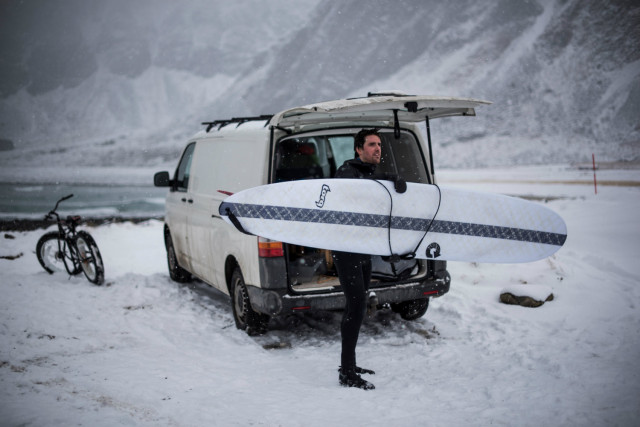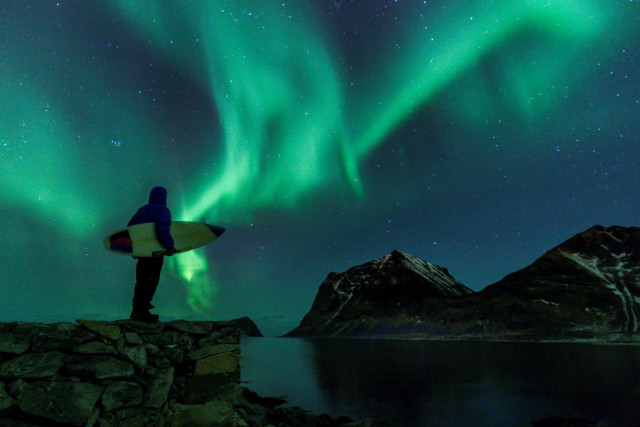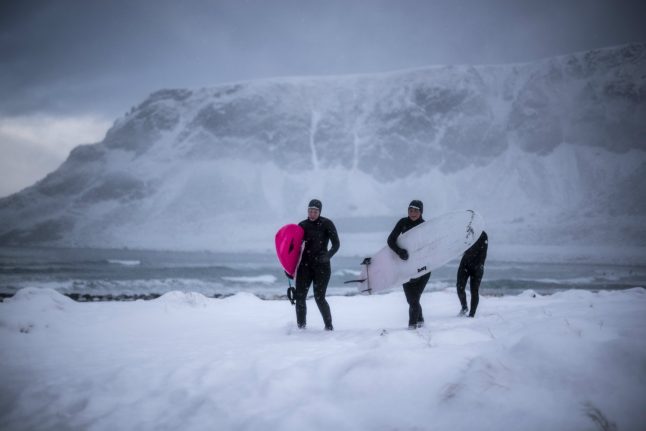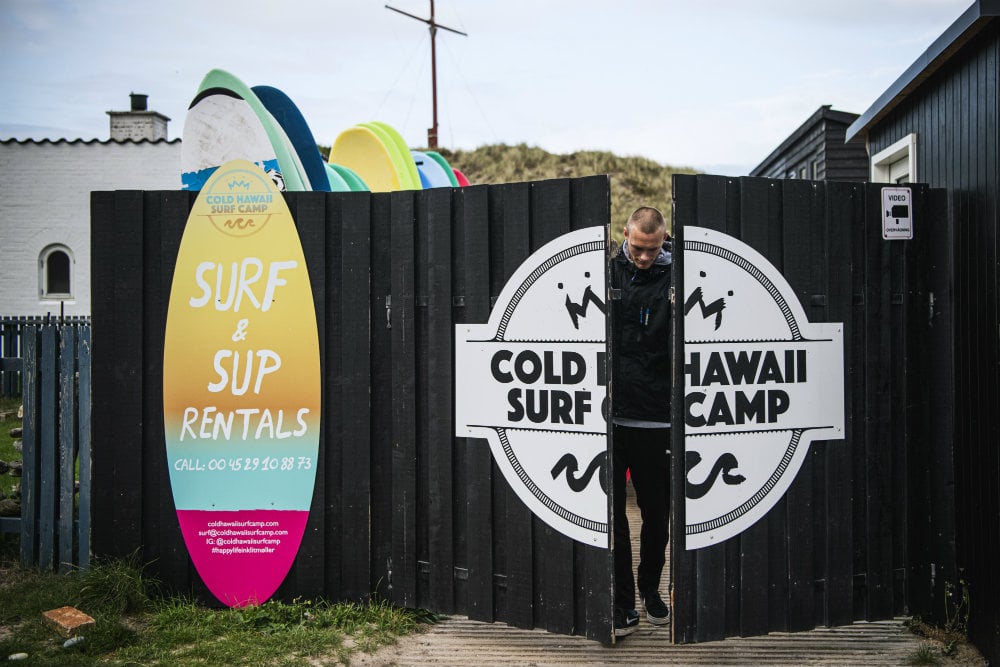“You come up from the ocean and you're just freaking cold,” says Unn Holgersen.
It's deep winter in this land of the spectacular Northern Lights, flashing green on the horizon, and the water is just four degrees above zero.
“You have to put your feet in a bowl of hot water and you have to change really quickly,” the 32-year-old veterinarian advises.
It may be cold and isolated, but Holgersen has chosen to live on the Lofoten islands because she is addicted to the thrill of winter surfing.
On its snow-covered beaches, she and other dedicated surfers brave the freezing weather — outside air temperature is a chilly minus 15 Celsius — and the ferocity of the ocean.
“I love the feeling,” says one surfer after riding the waves.
That exhilaration is shared by all those who visit the tiny town of Unstad on the islands.
Among them are two students, Christina Kolbu and Solmoy Austbo, who travelled three days in a mini-van to reach the frosty shores.
They quickly change out of their hippy garb, put on thick winter wetsuits and grab their boards to head out into the waiting surf.

A surfer puts his board away after a session in Unstad. Photo: Olivier Morin/AFP
Despite the chill, they do not hesitate as they plunge into the glacial waters.
When coming back to shore, they clutch their boards as they clamber up the beach as thick snowflakes fall around them.
Unstad is a favourite site with surfers: a vast open horizon with a series of snow-capped peaks on either side of the beach.
Situated above the Arctic Circle, around the same latitude as northern Siberia and Alaska, its waters remain accessible due to the Gulf Stream, which somewhat warms the ocean current that flows across the Atlantic to Norway's coast.
“Surfing is a lifestyle, it's a must,” says Lisa Blom, a 38-year-old hotel manager.
“We have better waves, quality waves, they're usually bigger, consistent.”
Some of the surfers argue there are even better waves here than in southern Europe or Bali.
“We have nice clear days, there are not too many people and the beautiful scenery,” says Holgersen. “It's the whole package.”

Photo: Olivier Morin/AFP




 Please whitelist us to continue reading.
Please whitelist us to continue reading.